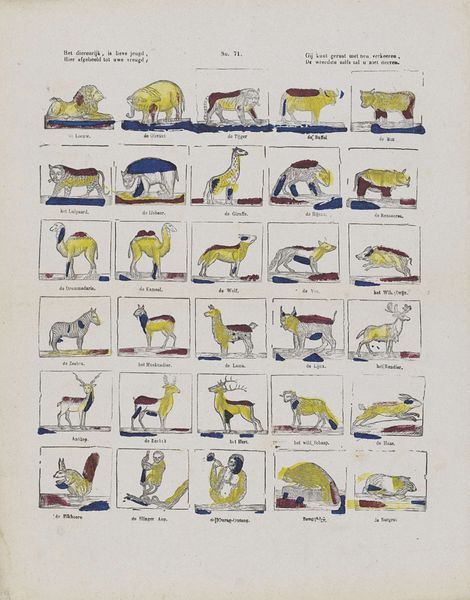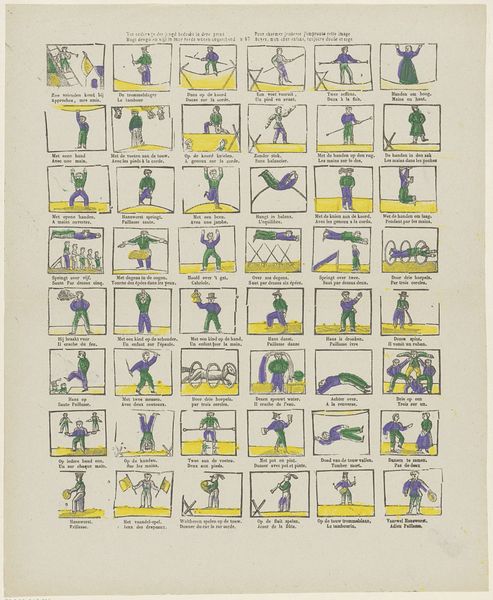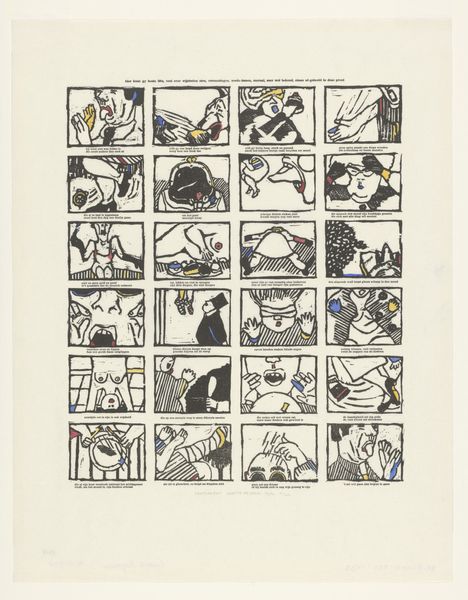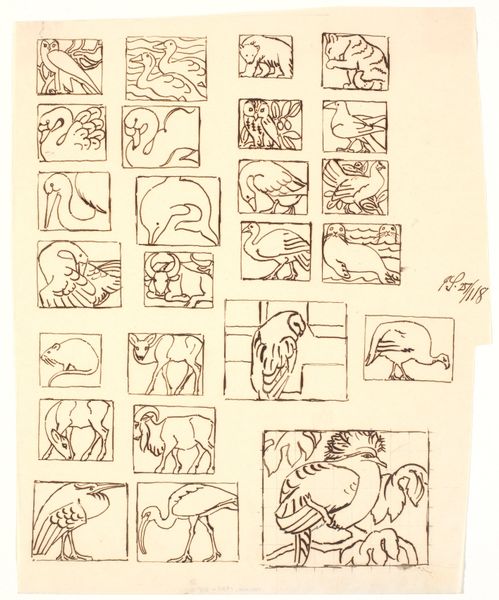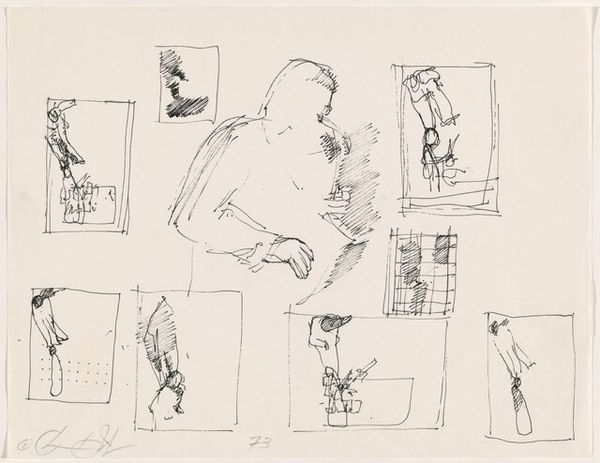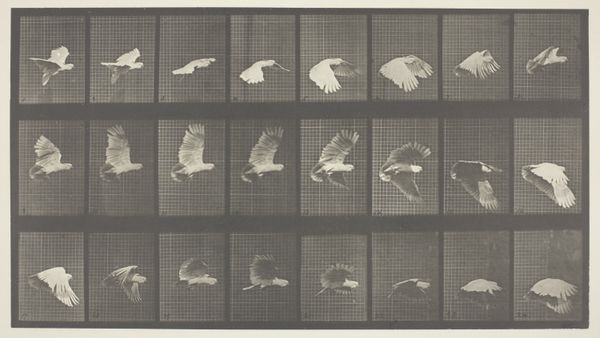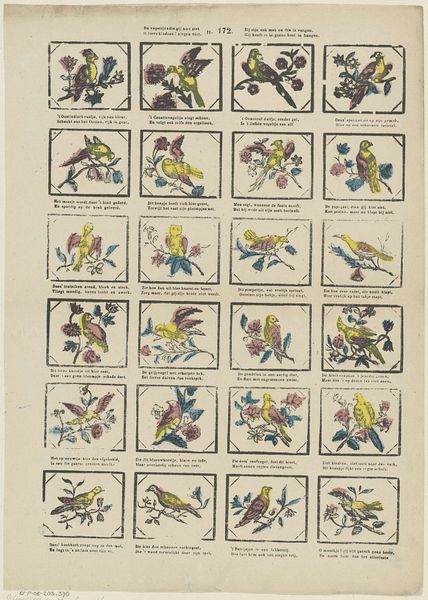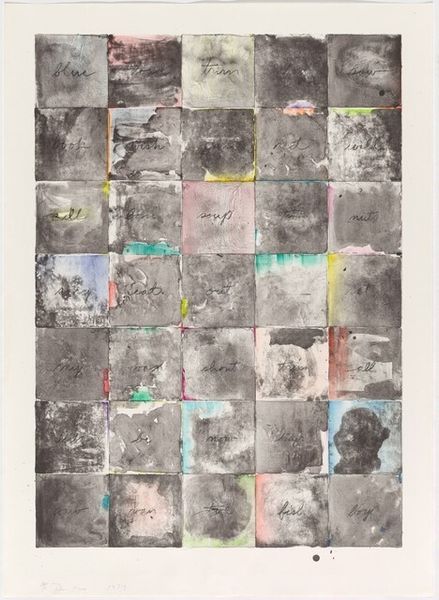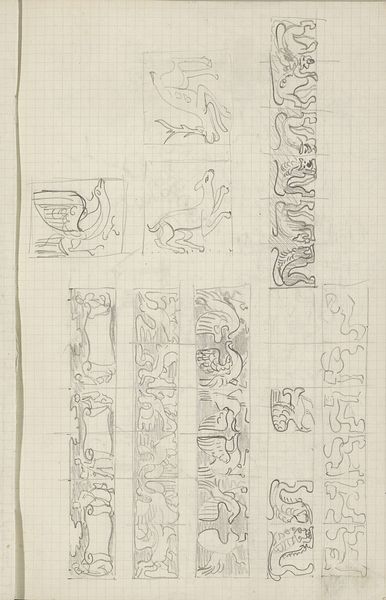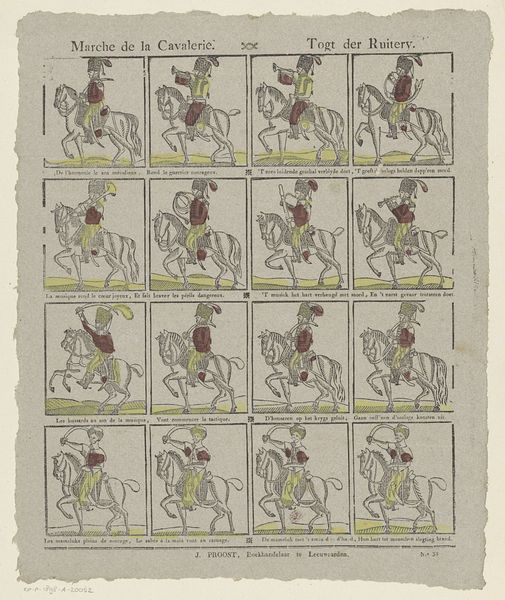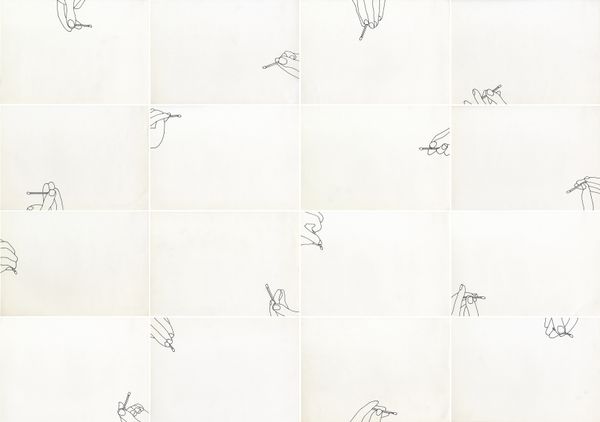
print, linocut
# print
#
linocut
#
linocut print
Dimensions: height 385 mm, width 319 mm
Copyright: Rijks Museum: Open Domain
Editor: This is "De groote vogelkooi", or "The large birdcage," a linocut print from sometime between 1827 and 1894. It looks like a chart or a study of different bird species, almost like a page torn from an old textbook. What strikes me is the almost industrial way the images are presented. How do you see this piece? Curator: The methodical arrangement and the printmaking process itself, especially linocut, are interesting. Linocut is a relatively accessible form of relief printing, suggesting a democratized approach to image-making. This challenges notions of the artist as a singular genius. Editor: A democratized approach? Could you explain that? Curator: Well, the printmaking process allows for reproduction. This wasn't a unique painting laboriously crafted; it could be multiplied. How does this mass production relate to its context in the 19th century? What did it mean to have information presented in this format available to a wider public? Think about who could access this type of printed image versus a unique, hand-painted artwork. Editor: I see. It speaks to the rise of mass communication and possibly even the beginnings of visual education for a broader audience. The use of relatively inexpensive materials like linoleum for the block reinforces this idea of accessibility. It also makes you think about who was doing this work, the labor involved, and the intended audience. Curator: Precisely. It prompts us to consider the means of production, the social context of its creation, and who ultimately consumed these images. It bridges high art and the practicalities of everyday life and material culture. Editor: It's amazing to think that such a simple image could hold so much meaning! I see how looking at the materials and production opens up the work to so much wider contexts. Curator: Indeed. The focus on the material conditions really helps understand what this art *does* and not just what it *represents*.
Comments
No comments
Be the first to comment and join the conversation on the ultimate creative platform.
